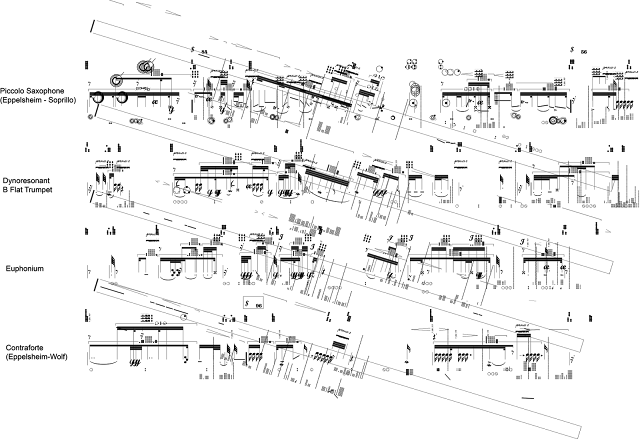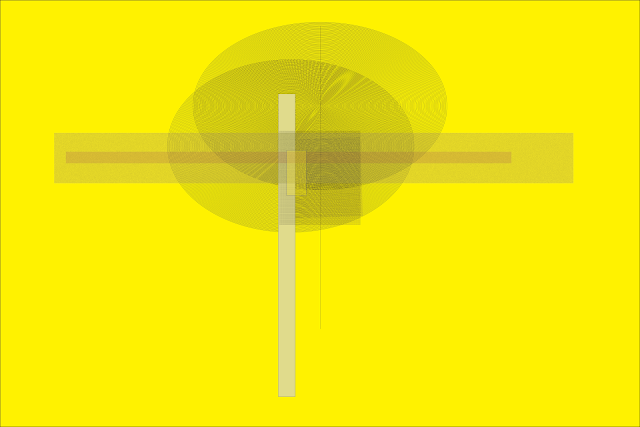In contemporary music composition, the proliferation of hyper-complex notational ontologies has challenged traditional notions of musical score and performance. Inspired by the works of Brian Ferneyhough, Adorno, and Wilhelm Reich, composers are experimenting with unconventional approaches to notation, often violating the score in ways that parallel the works of visual artists such as Albert Burri, Lucio Fontana, and Enrico Castellani.
Central to this discussion is the idea that notation is not merely a means of representing musical ideas but can itself be a generative force. Ferneyhough's music is characterized by a hyper-complexity of notation, which often involves a proliferation of symbols, unconventional time signatures, and microtonal inflections. The result is music that is both intricate and visceral, requiring a virtuosic performance technique that often pushes the boundaries of what is possible on an instrument.
Similarly, Adorno's writings on music and aesthetics have emphasized the importance of complexity and dissonance in the creation of new sonic experiences. For Adorno, the dissonance of music reflects the discordance of modern life, and the complexity of music is a response to the overwhelming complexity of contemporary society. Through his work, Adorno sought to challenge traditional notions of harmony and tonality, opening up new avenues for experimentation and creativity.
Wilhelm Reich's theories of Orgone energy have also had an impact on contemporary music composition, particularly in the development of sonorescence, a technique that involves introducing heat to an instrument to create new sounds. Reich's ideas about the connection between energy and the body have led some composers to explore the physicality of sound and the ways in which it can be manipulated.
Adorno's critique of the "culture industry" and its homogenizing effects on art can be seen as a direct challenge to traditional modes of musical expression. Similarly, Reich's concept of "muscular armor" and his interest in the role of the body in musical performance can be seen as a direct challenge to traditional Western notions of virtuosity and performance.
One consequence of the proliferation of hyper-complex notational ontologies is the potential for the violation of the score in ways that parallel the works of visual artists such as Burri, Fontana, and Castellani. Burri's use of combustion in his work, Fontana's piercing of his canvases, and Castellani's patterning of perforations are all examples of artists using physical interventions to create new visual experiences. Similarly, composers are exploring ways in which the score can be violated, opening up new possibilities for sonic experimentation.
One example of this is the use of extreme extended techniques, which often re-invent the timbral characteristics and sonorities of an instrument. These techniques can involve the use of unconventional playing techniques, such as scraping or bowing the instrument in unusual ways, or the introduction of electronic effects and processing. The result is music that is often harsh and dissonant, challenging traditional notions of harmony and tonality.
Another example is the use of sonorescence, which involves the introduction of heat to an instrument to create new sounds. This technique has been used by composers such as Tristan Murail, who has explored the physicality of sound through the use of heat, and Fausto Romitelli, who has used sonorescence to create new sonic textures and colors.
These ontologies, which allow for a violation of the score much in the way that artists like Albert Burri, Lucio Fontana, and Enrico Castellani have used combustion, piercing, and perforation to create unconventional artworks, are redefining the sonic landscape and expanding the possibilities of musical expression.
My approach to creating unconventional and at times confrontational music scores is also relevant in this context. My works often incorporate unconventional notations and extended techniques, and are known for a confrontational style and a willingness to challenge the traditional boundaries of musical expression. My compositions, like those of Ferneyhough and others who use hyper-complex notational ontologies, are often seen as challenging the dominant modes of musical expression.








































































